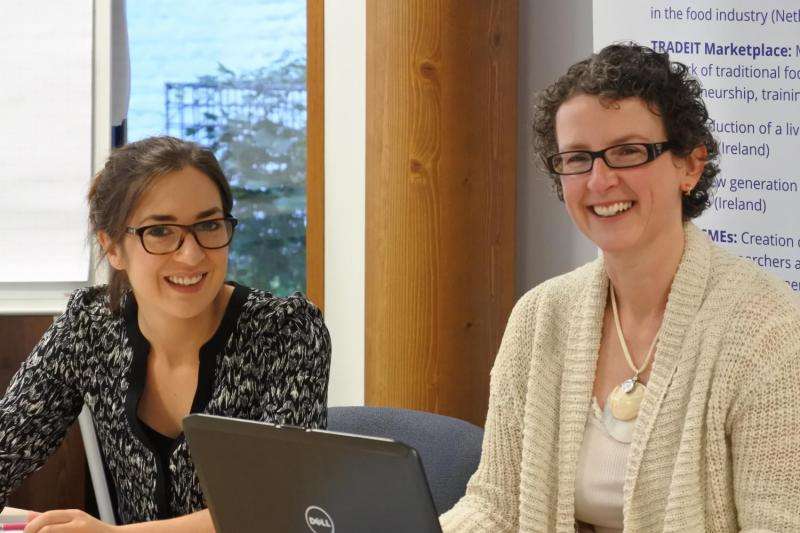Pictured from left: Dr Áine Regan and Dr Maeve Henchion. Credit: Teagasc
Social media is society's favourite platform for sharing, seeking and consuming information – what role is there for the scientific community in this environment?
In an article in the latest issue of TResearch (Teagasc's research and innovation magazine), Dr Áine Regan, a researcher at Teagasc, highlights how there is an increasing need for the scientific community to have a more prominent role on social media, particularly when it comes to challenging false information spread online. "While 'fake news' may be the most-used phrase of 2017, it's not a new concept in science. Questionable reporting of science has always been an issue – particularly where food has been concerned. However, with social media, there are increased opportunities for spreading misinformation to a global network in a much faster period of time."
Public backlash towards controversies such as the BSE-CJD crisis and the European debate on GMOs has led research funders to realise the importance of ensuring better links between the scientific community and the general public. Dr Maeve Henchion, Head of Agrifood Business and Spatial Analysis at Teagasc highlights how this connection between science and society is more important today than it ever was: "Tax-payers' money is being used to fund the research which can help us develop new technologies and approaches to combat challenges such as climate change and food security. Therefore, it is vital that scientists let the public know about this science first and foremost, but also that they listen to any potential concerns that the public may have with regard to ethical, moral and social issues".
In their recent qualitative study of 80 publicly-funded researchers, working in the area of food in Ireland and the UK, the researchers found respondents were most interested in engaging with actors that have a professional interest in science. This trend also applied to social media. "Our sample was mostly interested in engaging online with other academics, industry, media, and policy-makers. Only a small number of respondents actively used social media to engage with the general public," explains Áine.
With the setting up of an 'Expert Group on Altmetrics' by the European Commission's Directorate General for Research and Innovation, efforts are ramping up to understand the role of additional metrics in science. Altmetrics are web-based metrics that aggregate the online metrics of a peer-reviewed paper's impact, including, for example, the number of views, clicks, saves, comments, or downloads it gets, along with its shares or mentions in social media platforms. "They are quite some way from being recognised as a formal metric, but they could be the incentive required to motivate researcher engagement with social media," says Áine.
Social media could be the potential platform to help break down boundaries between scientists and society; however, there is some way to go yet and it appears from this latest study from Teagasc that a first major step in encouraging scientists to use these platforms will be to ensure they are properly supported and recognised for doing so.
More information: The report is online: www.teagasc.ie/media/website/p … earch-Spring2017.pdf
Provided by Teagasc





















